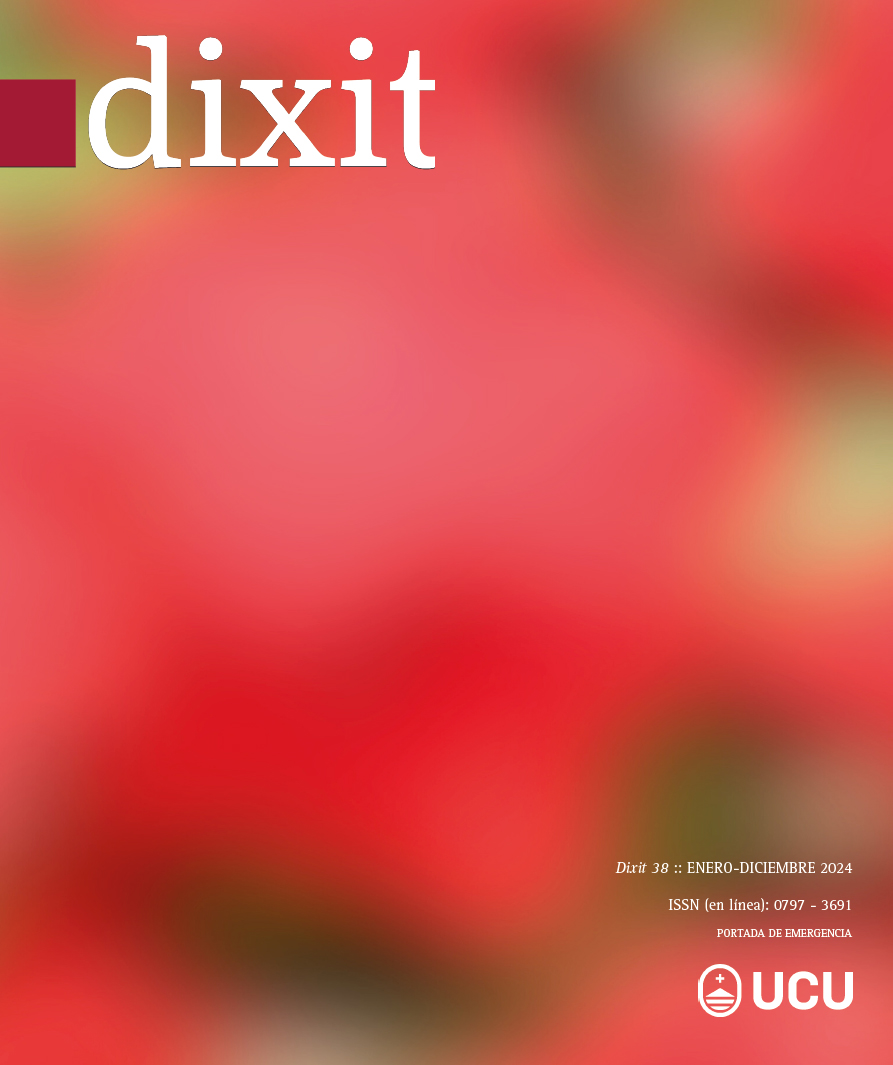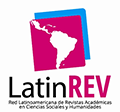Consumption of Information and Use of Social Networks in Ninth, Tenth and Eleventh Grade Students in the Departments of Caquetá, Putumayo and Guaviare: A Necessary Characterization
DOI:
https://doi.org/10.22235/d.v38.4093Keywords:
information consumption, disinformation, media education, high school, middle school studentsAbstract
This research presents the results of a survey elaborated by the Center for Studies of the Foundation for Press Freedom that was conducted among 1,604 students in nine municipalities of three departments of the Colombian Amazon in 2022, representing more than 5 percent of the students in the three departments. The statistical methodology used consisted of on-site data collection in the students' classrooms. The questions focused on what are the main means by which students get information, how they interact with information and what are their information contrasting skills they have. The results show that students prefer social networks for information. In first place is Facebook and, in second place, is TikTok. The study presents figures on the levels of trust they have for the media and social networks in general and the agenda items they are most interested in. These findings highlight the need to adopt media and information education programs in basic secondary and middle school education.
Downloads
References
Ararat Cuberos, E. (2017). Análisis del uso de las redes sociales en los estudiantes universitarios de San José de Cúcuta-Colombia. Mundo FESC, 7(13), 106-114. https://www.fesc.edu.co/Revistas/OJS/index.php/mundofesc/article/view/109
Ariely, G. (2015). Trusting the Press and Political Trust: A Conditional Relationship. Journal of Elections, Public Opinion and Parties, 25(3), 351-367. https://doi.org/10.1080/17457289.2014.997739
Arriagada, A., Browne, M., González, R., Salvatierra, V., Santana, L., & Velasco, P. (2022). Flujos de curatoría informativa en adolescentes. Universidad Adolfo Ibáñez. https://comunicaciones.uai.cl/investigacion/flujos-de-curatoria-informativa-en-adolescentes/
Barredo Ibáñez, D., Días, D. L., & De la Garza Montemayor, D. J. (2018). La relación entre el consumo de medios digitales, la participación y la eficacia política. Un estudio sobre los jóvenes universitarios en Colombia. Revista Latina de Comunicación Social, (73), 945-960. https://doi.org/10.4185/RLCS-2018-1290
Brossi, L., Olivera, M., Catillo, A. M., Cortesi, S., Lombana, A., Passeron, E., & Valdivia, A. (2021). Hablatam. Jóvenes, habilidades digitales, brechas de contenido y calidad de información en América Latina. Conectados al Sur. http://conectadosalsur.org/hablatam
Centro Latinoamericano de Investigación Periodística. (2023). Mercenarios digitales. https://www.elclip.org/mercenarios-digitales/
Das, R., & Ahmed, W. (2022). Rethinking Fake News: Disinformation and Ideology during the time of COVID-19 Global Pandemic. IIM Kozhikode Society & Management Review, 11(1), 146-159.
https://doi.org/10.1177/22779752211027382
Eddine Naji, J. (2009). Media education issues for professionals and citizens. Bridging the divides in countries of the south. Revista Científica de Comunicación y Educación. Comunicar, 16(32), 53-64. https://www.revistacomunicar.com/pdf/32/008-01-eddine.pdf
Edelman Trust Institute. (2022). Trust Barometer 2022. https://www.edelman.com/sites/g/files/aatuss191/files/2022-01/2022%20Edelman%20Trust%20Barometer%20FINAL_Jan25.pdf
Edelman Trust Institute. (2024). Trust Barometer 2024. https://www.edelman.lat/sites/g/files/aatuss296/files/2024-03/2024%20Edelman%20Trust%20Barometer%20Colombia.pdf
Fonseca-Cepeda, V., Idrobo, C. J., & Restrepo, S. (2019). The changing chagras: traditional ecological knowledge transformations in the Colombian Amazon. Ecology and Society, 24(1), 8. https://doi.org/10.5751/ES-10416-240108
Friesem, Y., Raman, U., Kanižaj, I., & Choi, G. Y. (Eds.). (2022). The Routledge Handbook of Media Education Futures Post-Pandemic. Routledge.
Fundación para la Libertad de Prensa. (2019). Cartografías de la Información. https://flip.org.co/cartografias-informacion
Gutiérrez-Martín, A., & Tyner, K. (2012). Educación para los medios, alfabetización mediática y competencia digital. Revista Científica de Comunicación y Educación. Comunicar, 19(38), 31-39. https://doi.org/10.3916/C38-2012-02-03
Gutiérrez-Martín, A., Torrego-González, A., & Vicente-Mariño, M. (2019). Media education with the monetization of YouTube: The loss of truth as an exchange value. Culture and Education, 31(2), 267-295. https://doi.org/10.1080/11356405.2019.1597443
Johnson, T. J., & Kaye, B. K. (2015). Site Effects: How Reliance on Social Media Influences Confidence in the Government and News Media. Social Science Computer Review, 33(2), 127-144. https://doi.org/10.1177/0894439314537029
López Jiménez, D. F. (2004). Consumo de medios en estudiantes de secundaria de Bogotá. Una mirada desde cuatro escuelas de pensamiento. Palabra Clave, 10. https://palabraclave.unisabana.edu.co/index.php/palabraclave/article/view/1268
Lupu, N. (Ed.), & Schiumerini, L. (2021). El apoyo ciudadano a la democracia en América Latina. Lapop, 8.
Marulanda, C. E., Giraldo, J., & López, M. (2014). Acceso y uso de las Tecnologías de la Información y las Comunicaciones (TICs) en el aprendizaje. El caso de los jóvenes preuniversitarios en Caldas, Colombia. Formación Universitaria, 7(4), 47-56.
McLeod, D. M., Wise, D., & Perryman, M. (2017). Thinking about the media: A review of theory and research on media perceptions, media effects perceptions, and their consequences. Review of Communication Research, 5, 35-83. https://www.ssoar.info/ssoar/handle/document/49823
Ministerio de Educación Nacional. (2022). Consultas avanzadas. http://bi.mineducacion.gov.co:8380/eportal/web/men-observatorio-laboral/consultas-avanzadas
Ministerio de Tecnologías de la Información y Comunicaciones de Colombia. (2024). oletín trimestral del sector TIC - Cifras tercer trimestre de 2023. https://colombiatic.mintic.gov.co/679/alt-article-334280.html
Park, S., Fisher, C., Flew, T., & Dulleck, U. (2020). Global Mistrust in News: The Impact of Social Media on Trust. International Journal on Media Management, 22(2), 83-96. https://doi.org/10.1080/14241277.2020.1799794
Peña Gil, H. A., Cuartas Castro, K. A., & Tarazona Bermúdez, G. M. (2017). La brecha digital en Colombia: Un análisis de las políticas gubernamentales para su disminución. Redes de Ingeniería, 59-71. https://doi.org/10.14483/2248762X.12477
Pérez Escoda, A., Barón-Dulce, G., & Rubio-Romero, J. (2021). Mapeo del consumo de medios en los jóvenes: Redes sociales, “fake news” y confianza en tiempos de pandemia. index.Comunicación, 11(2), 187-208. https://doi.org/10.33732/ixc/11/02Mapeod
Pinto, R., & Filgueiras, E. (2023). Media appropriations of young consumers: Production and Consumption of Digital Content on Social Networks. Ergonomics In Design, 77. http://doi.org/10.54941/ahfe1003374
Ptaszek, G. (2021). Media education 3.0? How Big Data, Algorithms, and AI Redefine Media Education. En D. Frau-Meigs, S. Kotilainen, M. Pathak-Shelat, M. Hoechsmann, & S. R. Poyntz (Eds.), The Handbook on Media Education Research (pp. 229-238). Wiley-Blackwell. https://doi.org/10.1002/9781119166900.ch21
Rivera Otero, J. M., Lagares Díez, N., Pereira López, M., & López-López, P. C. (2021). Transparency Policies in European Public Broadcasters: Sustainability, Digitalisation and Fact-Checking. Social Sciences, 10(6), 217. https://doi.org/10.3390/socsci10060217
Saavedra, V. P., Ospina Celis, D., Upegui, J. C., & León Torres, D. C. (2021). Desigualdades digitales. Aproximación sociojurídica al acceso a Internet en Colombia. Dejusticia. https://www.dejusticia.org/publication/desigualdades-digitales-aproximacion-sociojuridica-al-acceso-a-internet-en-colombia/
Van Dijk, J. A. G. M. (2005). The Deepening Divide: Inequality in the Information Society. Sage Publications.
Vogels, E. A., Gelles-Watnick, R., & Massarat, N. (2022). Teens, Social Media and Technology 2022. Pew Research Center. https://www.pewresearch.org/internet/2022/08/10/teens-social-media-and-technology-2022/
Published
How to Cite
Issue
Section
License
Copyright (c) 2024 Dixit

This work is licensed under a Creative Commons Attribution 4.0 International License.
From issue number 32 onwards all contents are licensed under the Creative Commons Attribution 4.0 International License (CC BY 4.0).
Issues number 29-31 are licensed under the Creative Commons Attribution-NonCommercial 4.0 International License.
The contents corresponding to number 28 and earlier editions are under the Creative Commons Attribution-NonCommercial-ShareAlike 4.0 International License.


















